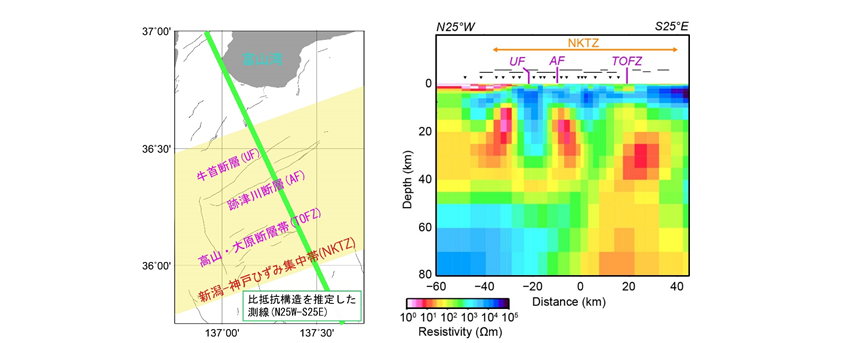Yoshiya Usui, Makoto Uyeshima, Tsutomu Ogawa, et. al.
JGR Solid Earth Vol. 126, Issue 4 (2021)
https://doi.org/10.1029/2020JB020904
The Atotsugawa fault is one of the most active faults in Japan, and the strain accumulation at the fault is considered to be caused by an aseismic shear zone in the fluid-rich lower crust. To identify the shear zone and investigate the origin of the aqueous fluid in the lower crust, we deployed a Network-MT survey in addition to a conventional wideband-MT survey around the fault and performed an inversion combining both the MT data sets. In the inversion, by modifying a conventional inversion algorism, we accurately represented kilometer-scale dipoles of the Network-MT measurement to provide constraints on the electrical resistivity structure. In the lower crust under the study area, there are localized conductive anomalies below the Atotsugawa fault, the Ushikubi fault, and the Takayama-Oppara fault zone. Comparing our electrical resistivity structure with the seismic velocity structure, we interpreted that the lower-crustal conductors are localized ductile shear zones with highly connected fluid. We considered that the localized ductile shear zones are responsible for the strain accumulation along the respective active faults. In addition, in the mantle wedge above the subducting Philippine Sea slab and its downward extension, a highly conductive portion is detected, which may be attributed to the fluid dehydrated from the Philippine Sea slab and/or the Pacific slab. The existence of the large conductive area supports the suggestion of previous seismic and geochemical studies that the fluid of the lower crust around the Atotsugawa fault originated from subducting slabs.


